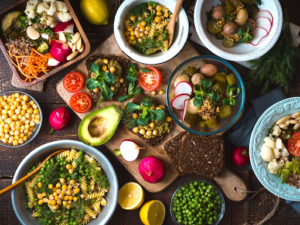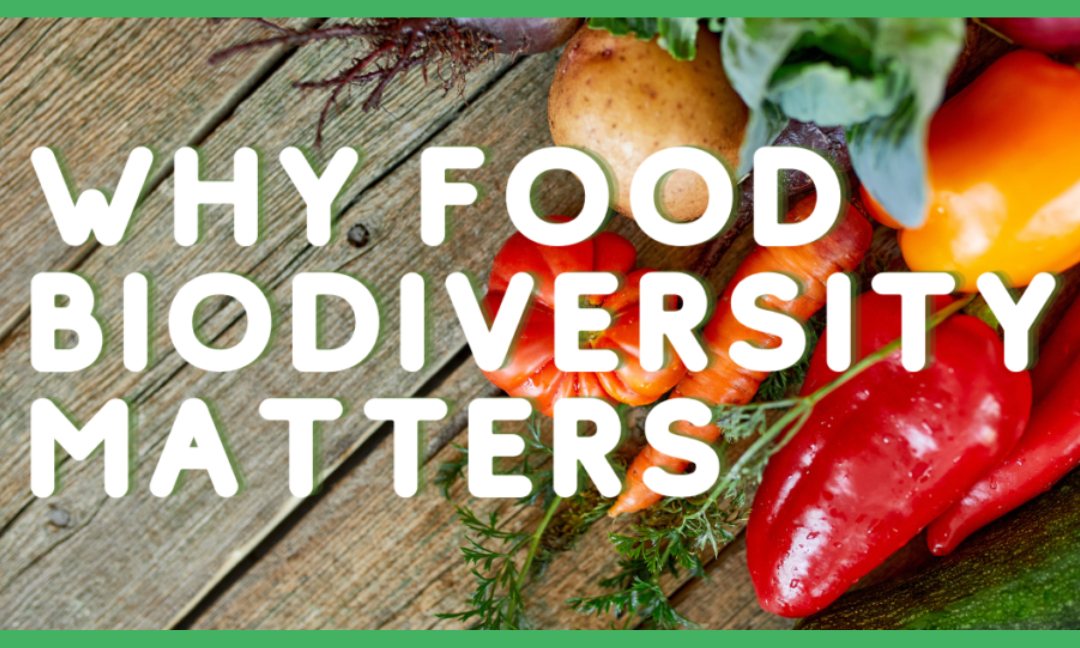You walk into your local grocery store and are instantly greeted by hundreds of different foods. You see fruits and vegetables coming from different genetic variations, as well as diverse forms of dairy, grain, and meat foods. This wide variety that we have in our food is known as food biodiversity. It can be examined by the difference in species, their genetic levels, or groups of plants and foods in ecosystems. How does food biodiversity affect us though and why do we need it?

Food Biodiversity’s Effects On Us
There is no question that nutrition is a major reason why we’re always buying food of such diversity. Different foods allow us to take our essential needs like proteins, carbohydrates, and vitamins in different forms. Without this diversity, we would not be able to provide our bodies with what they need sufficiently. Food biodiversity improves food security as well. With a constantly growing population on Earth, there is more and more need for an increase in food production. Agricultural production is at an all-time high and is still growing. As climate change constantly poses threats to more and more food species, biodiversity is important in agriculture for its sustainability. It also allows for more access globally and minimizes scarcity.

It is not just us humans that have access to this much food biodiversity. Other organisms adapt to the biodiversity of their ecosystems as it structures their food systems and regulates food chains. It allows living things to adapt to change and be less vulnerable to pests and diseases. This is because food biodiversity allows plants with more suitable genetics to survive, so extinction does not wipe out all of nature. With constant issues the world is facing with climate change, ecosystems are sustained due to food biodiversity allowing changes in food systems.
Food Biodiversity At Risk
According to the Food and Agriculture Organization of the United Nations (FAO), 75% of the world’s global calories come from only twelve food plants and five animal species. With climate change constantly growing and posing dangers to a variety of species, this poses a threat to food biodiversity. The production of the species which make up most of the world’s foods must sustain while overcoming the effects of climate change. Some foods like coffee, honey, avocados, strawberries, and bananas are already at risk. The chart below shows the causes of the threats that food diversity faces.
As you can see, some of the greatest threats to food biodiversity are all caused by humans. With overexploitation, humans harvest from the wild faster than nature could recover. Ecosystems and their food chains are disturbed, which endangers species and threatens food biodiversity. Effects are already kicking in too. According to a report by the FAO, 24% of nearly 4,000 wild food species are losing profusion around the world. According to the FAO, the state of more than half of the reported wild food species is unknown, so the decline could be more serious than it is seen and treated.
How You Can Protect Food Biodiversity
As harmless as it may seem, small actions like walking on pathways and staying clear of flowers and crops can protect natural habitats and species in danger. Researching and growing a variety of plants and vegetables local to your area helps support local ecosystems and maintain their food biodiversity. Plant scientists are also working to develop crop varieties that use less water. Conserving water anywhere possible helps protect the diversity of plants in wetlands. Climate change is a major threat to food biodiversity as well, so conservation is key for us to protect species.
To learn more about the importance of food biodiversity and the problems it faces, check out our parent organization, Seeds of Diversity. They provide ways you can get involved in your community and help save seeds.
Works Cited
Seed and food biodiversity. Seeds of Diversity. (n.d.). Retrieved May 5, 2022, from https://seeds.ca/diversity/
“Top 10 Ways You Can Protect Biodiversity.” CropLife International, 22 May 2019, https://croplife.org/news/top-10-ways-you-can-protect-biodiversity/#:~:text=Plant%20local%20flowers%2C%20fruit%20and,ecosystem%20of%20your%20local%20area.
“Agricultural Biodiversity To End World Hunger.” Transformation Holdings, 7 Apr. 2021, https://www.transformationholdings.com/agriculture/agricultural-biodiversity-to-end-world-hunger/.
“8 Foods Going Extinct Due to Climate Change.” Topic Insights, 23 July 2021, https://topicinsights.com/sustainability/foods-going-extinct-due-to-climate-change/.
Heater, Jim O’Donnell, and Cullen, et al. “Biodiversity Loss Is Endangering Food Security, Un Warns.” Yale E360, 22 Feb. 2019, https://e360.yale.edu/digest/biodiversity-loss-is-endangering-food-security-un-warns#:~:text=%E2%80%9CLess%20biodiversity%20means%20that%20plants,security%20and%20nutrition%20at%20risk.%E2%80%9D.
Ho, Sally. “Plant-Based Food System Shift Must Happen to Halt Biodiversity Loss, Experts Say.” Green Queen, 6 July 2021, https://www.greenqueen.com.hk/plant-based-food-system-shift-must-happen-halt-biodiversity-loss-experts-say/.
Gallagher, Marty. “Nutrition Wave – 10 Steps Forward, 9 Steps Backward: Raw with Marty Gallagher.” Iron Company Fitness Equipment and Rubber Gym Flooring, IRON COMPANY, 12 Aug. 2021, https://www.ironcompany.com/blog/nutritional-wave-ten-steps-forward-nine-steps-backward.
“The Biodiversity That Is Crucial for Our Food and Agriculture Is Disappearing by the Day.” FAO, https://www.fao.org/news/story/en/item/1180463/icode/.

